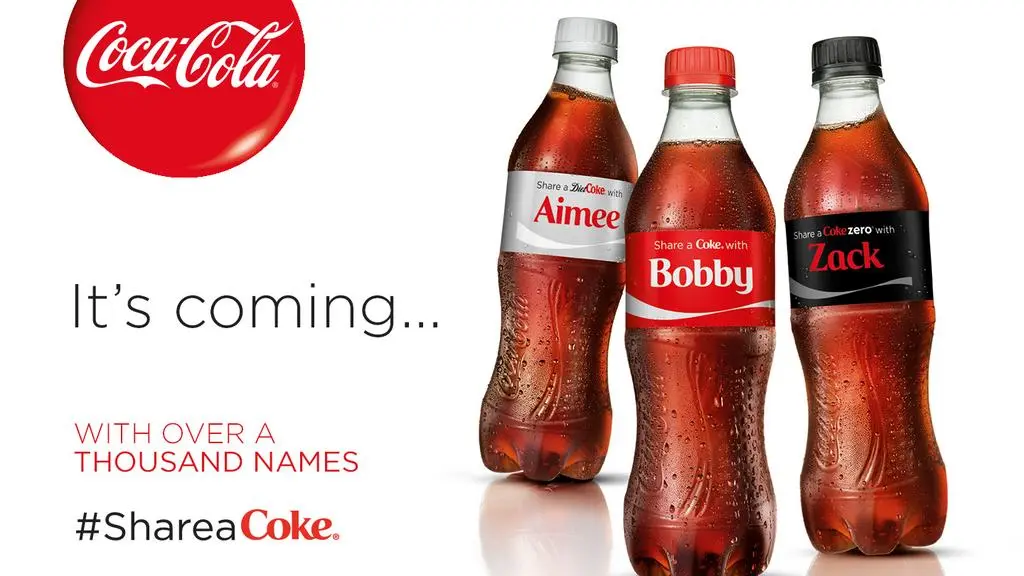Key Aspects of Lead Generation Through Content Marketing

What is content marketing?
Content marketing is a strategic approach to marketing that revolves around the creation and dissemination of valuable, relevant, and captivating content designed to attract and engage a specified target audience. This content takes on various formats, including blog posts, videos, ebooks, infographics, and more, with the primary objective of not only delivering information but also aligning with the brand’s overarching goals and identity.
Lead generation, a specific facet of marketing, is devoted to identifying and nurturing potential customer leads. In this context, content marketing plays a pivotal role by providing valuable resources, such as in-depth ebooks or informative webinars, in exchange for contact information. This exchange establishes a connection with potential customers and initiates the process of transforming them into sales-ready leads through a continuous stream of relevant and enlightening content.
The synergy between content marketing and lead generation forms a dynamic strategy that not only attracts and educates potential customers but also nurtures them into valuable leads, driving growth and success for businesses.

Persuasive copywriting: What is it and how to use it for lead generation?
Persuasive copywriting is a specialized writing technique designed to influence and convince readers to take a specific action or adopt a particular viewpoint. Incorporating persuasive copywriting into your lead generation efforts can significantly improve the conversion rate of website visitors or prospects into potential leads. By crafting compelling and persuasive content that resonates with your target audience, you can encourage them to take the next step and provide their contact information in exchange for valuable resources or offers.
Here’s how to use persuasive copywriting for lead generation:
-
Know Your Audience and Create a Captivating Headline:
To effectively use persuasive copywriting for lead generation, you must have a deep understanding of your target audience. Know their needs, pain points, and preferences to tailor your message accordingly. Start with a compelling headline that grabs the reader’s attention and piques their interest. The headline should promise a solution or benefit to the reader.
-
Offer Value and Highlight Benefits:
Clearly communicate the value of what you’re offering in exchange for the reader’s contact information. This could be an e-book, whitepaper, webinar, or any other valuable content that addresses a specific problem or provides useful information. Emphasize the benefits the reader will gain by accessing your offer. Explain how it can solve their problems or improve their situation. Use persuasive language to make these benefits appealing.
-
Build Credibility and Address Objections:
Include elements that build trust and credibility, such as customer testimonials, case studies, endorsements, or social proof. Demonstrating that others have found value in your offer can be persuasive. Anticipate and address potential objections or concerns that readers might have about providing their contact information. Offer reassurances or explanations to mitigate these concerns.
-
Create Urgency and Use Clear Call to Action (CTA):
Encourage prompt action by creating a sense of urgency. Use phrases like “limited time offer” or “act now” to convey that the opportunity won’t last forever. Your copy should include a clear and compelling call to action (CTA) that directs the reader on what action to take. The CTA should be straightforward and prominently displayed.
-
Optimize for Scannability and Leverage Visuals:
Most online readers scan content rather than reading it thoroughly. Make your persuasive copy scannable by using subheadings, bullet points, and short paragraphs. Visual elements, such as images, infographics, and videos, can enhance your persuasive copywriting. Use visuals that complement and reinforce your message.
-
Test and Refine and Follow Up Effectively:
Conduct A/B testing to assess different versions of your copy and optimize it for the best results. Test different headlines, CTA buttons, and copy variations to improve lead generation effectiveness. Once you’ve generated leads, have a robust follow-up strategy in place. This can include email marketing campaigns, personalized communication, and nurturing sequences to convert leads into customers.
Consistency in Content Creation: Targeted and Diversified Content
Consistency in content creation is a fundamental pillar of a successful digital marketing strategy. It not only keeps your audience engaged but also reinforces your brand’s presence in their minds. However, it’s not just about churning out content regularly; it’s about creating content that’s both targeted and diversified.
Targeted content ensures that each piece resonates with your specific audience, addressing their needs, concerns, and interests. This precision helps in attracting and retaining the right audience, increasing the chances of conversion.
On the other hand, diversified content acknowledges the varied preferences of your audience. By offering a mix of formats, such as blog posts, videos, infographics, podcasts, and more, you cater to different learning and consumption styles. This diversity widens your reach and keeps your audience engaged on their terms, making your content strategy more inclusive and adaptable to a broader range of potential customers.
In essence, striking a balance between consistency, targeting, and diversification is the key to a compelling and effective content marketing strategy that drives engagement, leads, and conversions.

SEO Optimization
Search Engine Optimization (SEO) is a set of strategies and practices aimed at improving a website’s visibility and ranking on search engine results pages (SERPs), primarily with the goal of increasing organic (non-paid) traffic to the website. SEO optimization involves a combination of on-page and off-page techniques to enhance a website’s chances of being discovered by search engine users. Here’s an overview of what SEO optimization is and how to use it effectively:
-
Keyword Research and On-Page SEO:
Start by identifying relevant keywords and phrases that your target audience might use to search for content or products related to your website. Keyword research tools can help you find high-value keywords with good search volume and low competition. Optimize your website’s individual pages to be search engine-friendly. This includes using target keywords in title tags, meta descriptions, header tags, and within the content itself. Ensure your content is well-structured and easily readable.
-
Quality Content:
High-quality, relevant, and valuable content is crucial for SEO. Regularly update your website with fresh and informative content that caters to the needs and interests of your target audience.
-
Mobile Optimization, Page Speed and Loading Times
Given the increasing use of mobile devices for internet access, it’s essential to have a mobile-friendly and responsive website. Google and other search engines prioritize mobile-friendly websites in their rankings. Faster-loading pages are preferred by both users and search engines. Optimize images, reduce server response times, and employ browser caching to enhance page speed.
-
Technical, Off-Page and Local SEO:
Address technical issues on your website, such as broken links, duplicate content, and crawlability. Submit an XML sitemap to search engines to help them index your pages effectively. Off-page SEO includes strategies like link building, social media marketing, and online reputation management. High-quality backlinks from reputable websites can significantly improve your website’s authority and rankings. If you have a physical location, optimize your website for local searches. Claim and optimize your Google My Business listing, ensure accurate NAP (Name, Address, Phone) information, and encourage reviews from satisfied customers.
-
User Experience (UX):
Prioritize user experience by making your website easy to navigate and visually appealing. A user-friendly website encourages longer visits and can lead to higher search engine rankings.
-
Monitor, Analyze, Adapt and Evolve:
Regularly monitor your website’s performance with SEO tools like Google Analytics and Google Search Console. Analyze traffic, track keyword rankings, and identify areas for improvement. SEO is an ongoing process, and search engine algorithms change regularly. Stay updated with industry trends and adapt your SEO strategy accordingly to maintain or improve your rankings.

Examples of Content Marketing
To truly understand the power of content marketing, let’s delve into some real-world examples. Consider Red Bull‘s content strategy, which extends far beyond energy drinks. Through thrilling videos showcasing extreme sports and daring stunts, they’ve cultivated a dedicated audience of adrenaline junkies. This approach not only bolsters their brand but also fosters a sense of community around their content.
Coca-Cola‘s “Share a Coke” campaign offers another remarkable example. By personalizing their product labels with common names, they encouraged customers to share their unique bottles on social media, generating widespread user-generated content and engagement.
GoPro, known for its action cameras, takes content marketing to the extreme. They encourage their customers to create and share action-packed videos and photos taken with their cameras. This user-generated content serves as both marketing material and social proof of the product’s capabilities.
Another standout illustration is Adobe‘s Creative Cloud blog, a valuable resource for creative professionals. From tutorials to design tips, it caters to its target audience, offering inspiration and expertise while positioning Adobe as a thought leader in the industry.
These examples vividly illustrate how content marketing can extend far beyond traditional advertising, establishing a brand’s authority, fostering engagement, and ultimately, driving lead generation. The key lies in offering value to your audience, and in return, they’ll be more inclined to become your loyal customers.
Mastering Lead Generation Through Content Marketing
In conclusion, lead generation through content marketing is a dynamic process that thrives on meticulous planning, unwavering consistency, persuasive copywriting, and a deep understanding of your audience’s needs. By harnessing the power of compelling language, crafting content that is not just relevant but precisely targeted, maintaining a consistent presence, diversifying content formats, and optimizing for SEO, businesses can effectively attract and nurture potential leads. In an era where information abounds, the art of persuasive and relevant content marketing stands as the cornerstone for unlocking success and nurturing enduring customer relationships.




